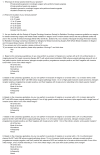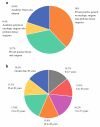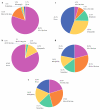Assessment of Practice Patterns Following Publication of the SSO-ASTRO Consensus Guideline on Margins for Breast-Conserving Therapy in Stage I and II Invasive Breast Cancer
- PMID: 26202554
- PMCID: PMC4696114
- DOI: 10.1245/s10434-015-4666-1
Assessment of Practice Patterns Following Publication of the SSO-ASTRO Consensus Guideline on Margins for Breast-Conserving Therapy in Stage I and II Invasive Breast Cancer
Abstract
Background: The recently published SSO-ASTRO consensus guideline on margins concluded "no ink on tumor" is the standard for an adequate margin. This study was conducted to determine how this guideline is aligned with current clinical practice.
Methods: A survey was sent to 3057 members of the American Society of Breast Surgeons. Questions assessed respondents' clinical practice type and duration, familiarity with the guideline, and preferences for margin re-excision.
Results: Of those surveyed, 777 (25%) responded. Most (92%) indicated familiarity with the guideline. Of these respondents, the majority (n = 678, or 94.7%) would re-excise all or most of the time when tumor extended to the inked margin. Very few (n = 9, or 1.3%) would re-excise all or most of the time when tumor was within 2 mm of the margin. Over 12 % (n = 90) would re-excise all or most of the time for a triple-negative tumor within 1 mm of the margin, whereas 353 (49.6%) would re-excise all or most of the time when imaging and pathology were discordant, and tumor was within 1 mm of multiple margins. Finally, 330 (45.8%) would re-excise all or most of the time when multiple foci of ductal carcinoma in situ extended to within 1 mm of multiple inked margins.
Conclusions: Surgeons are in agreement to re-excise margins when tumor touches ink and generally not to perform re-excisions when tumor is close to (but not touching) the inked margin. For more complex scenarios, surgeons are utilizing their individual clinical judgment to determine the need for re-excision.
Figures



References
-
- Fisher B, Rn R, et al. Eight-year results of a randomized clinical trial comparing total mastectomy and lumpectomy with or without irradiation in the treatment of breast cancer. N Engl J Med. 1989;320(13):822–8. - PubMed
-
- Veronesi U, Cascinelli N, Mariani L, et al. Twenty-year followup of a randomized study comparing breast-conserving surgery with radical mastectomy for early breast cancer. N Engl J Med. 2002;347(16):1227–32. - PubMed
-
- Blichert-Toft M, Nielsen M, During M, et al. Long-term results of breast conserving surgery vs. mastectomy for early stage invasive breast cancer: 20-year follow-up of the Danish randomized DBCG-82TM protocol. Acta Oncol. 2008;47(4):672–81. - PubMed
-
- Jacobson JA, Danforth DN, Cowan KH, et al. Ten-year results of a comparison of conservation with mastectomy in the treatment of stage I and II breast cancer. N Engl J Med. 1995;332(14):907–11. - PubMed
-
- Sarrazin D, Le MG, Arriagada R, et al. Ten-year results of a randomized trial comparing a conservative treatment to mastectomy in early breast cancer. Radiother Oncol. 1989;14(3):177–184. - PubMed
MeSH terms
Grants and funding
LinkOut - more resources
Full Text Sources
Other Literature Sources
Medical

